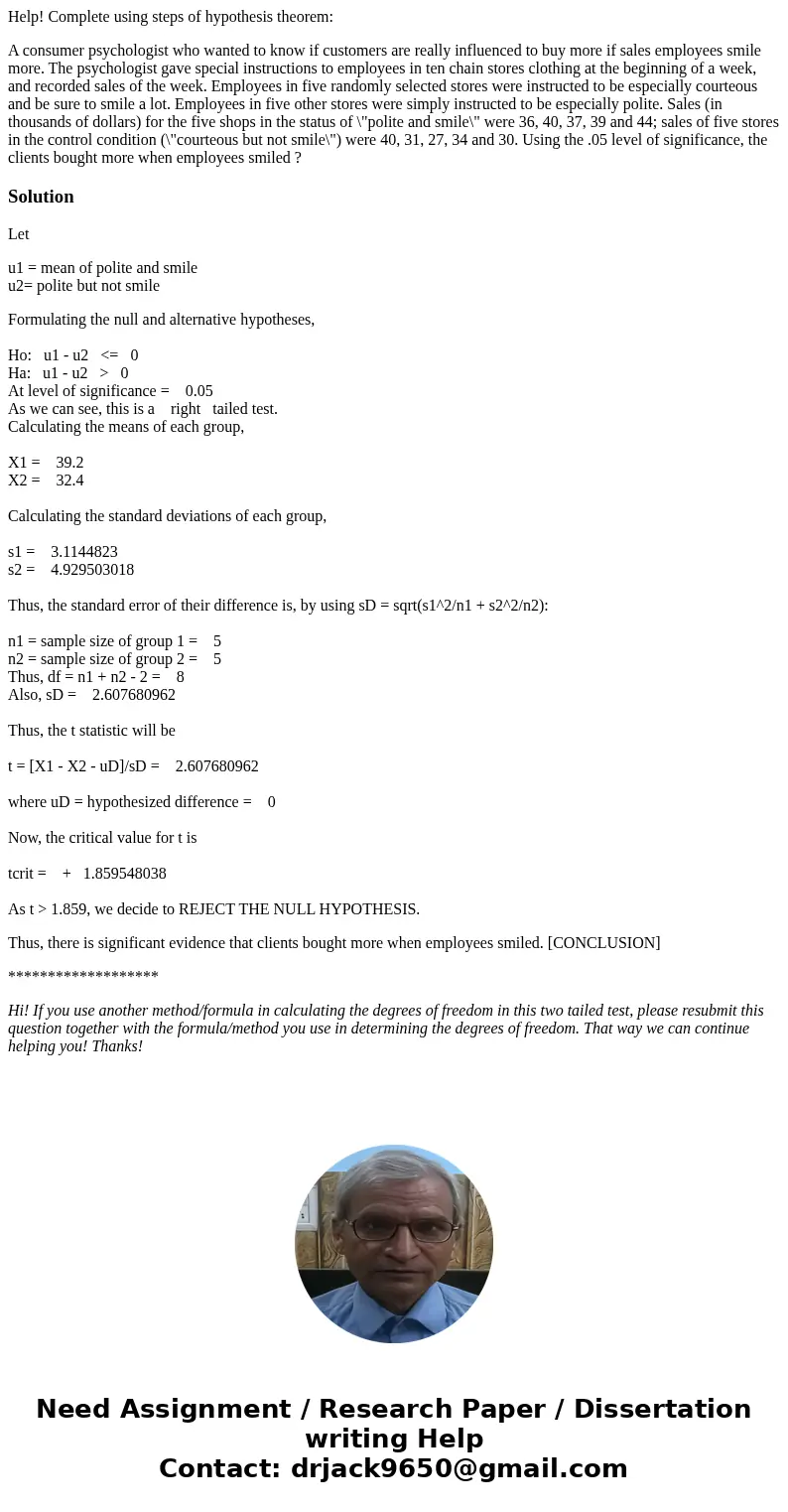Help Complete using steps of hypothesis theorem A consumer p
Help! Complete using steps of hypothesis theorem:
A consumer psychologist who wanted to know if customers are really influenced to buy more if sales employees smile more. The psychologist gave special instructions to employees in ten chain stores clothing at the beginning of a week, and recorded sales of the week. Employees in five randomly selected stores were instructed to be especially courteous and be sure to smile a lot. Employees in five other stores were simply instructed to be especially polite. Sales (in thousands of dollars) for the five shops in the status of \"polite and smile\" were 36, 40, 37, 39 and 44; sales of five stores in the control condition (\"courteous but not smile\") were 40, 31, 27, 34 and 30. Using the .05 level of significance, the clients bought more when employees smiled ?
Solution
Let
u1 = mean of polite and smile
u2= polite but not smile
Formulating the null and alternative hypotheses,
Ho: u1 - u2 <= 0
Ha: u1 - u2 > 0
At level of significance = 0.05
As we can see, this is a right tailed test.
Calculating the means of each group,
X1 = 39.2
X2 = 32.4
Calculating the standard deviations of each group,
s1 = 3.1144823
s2 = 4.929503018
Thus, the standard error of their difference is, by using sD = sqrt(s1^2/n1 + s2^2/n2):
n1 = sample size of group 1 = 5
n2 = sample size of group 2 = 5
Thus, df = n1 + n2 - 2 = 8
Also, sD = 2.607680962
Thus, the t statistic will be
t = [X1 - X2 - uD]/sD = 2.607680962
where uD = hypothesized difference = 0
Now, the critical value for t is
tcrit = + 1.859548038
As t > 1.859, we decide to REJECT THE NULL HYPOTHESIS.
Thus, there is significant evidence that clients bought more when employees smiled. [CONCLUSION]
*******************
Hi! If you use another method/formula in calculating the degrees of freedom in this two tailed test, please resubmit this question together with the formula/method you use in determining the degrees of freedom. That way we can continue helping you! Thanks!

 Homework Sourse
Homework Sourse